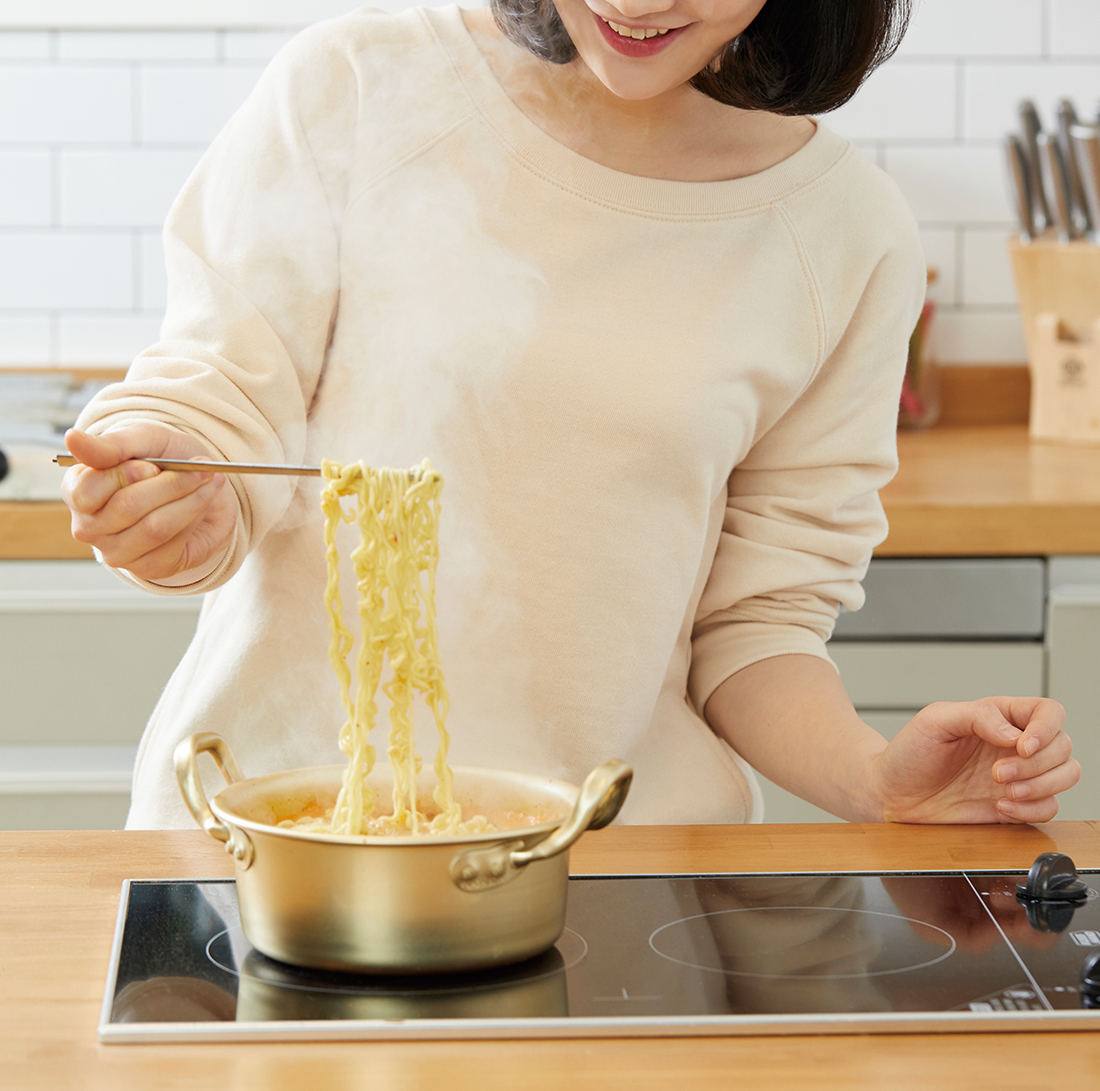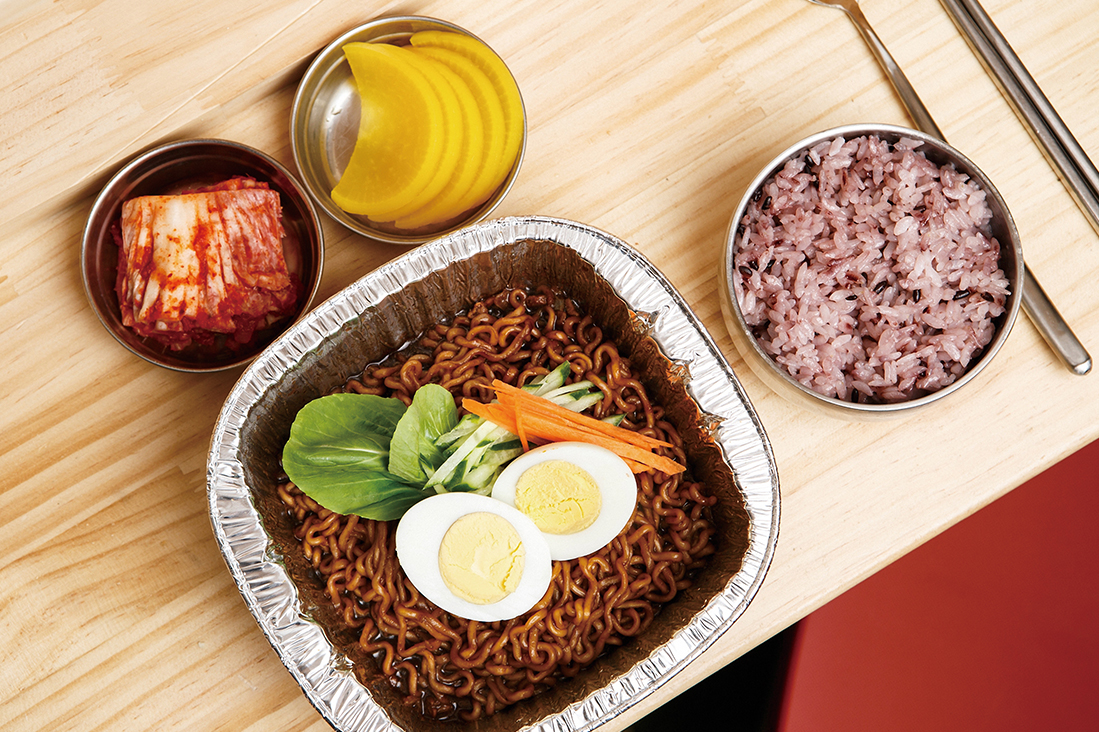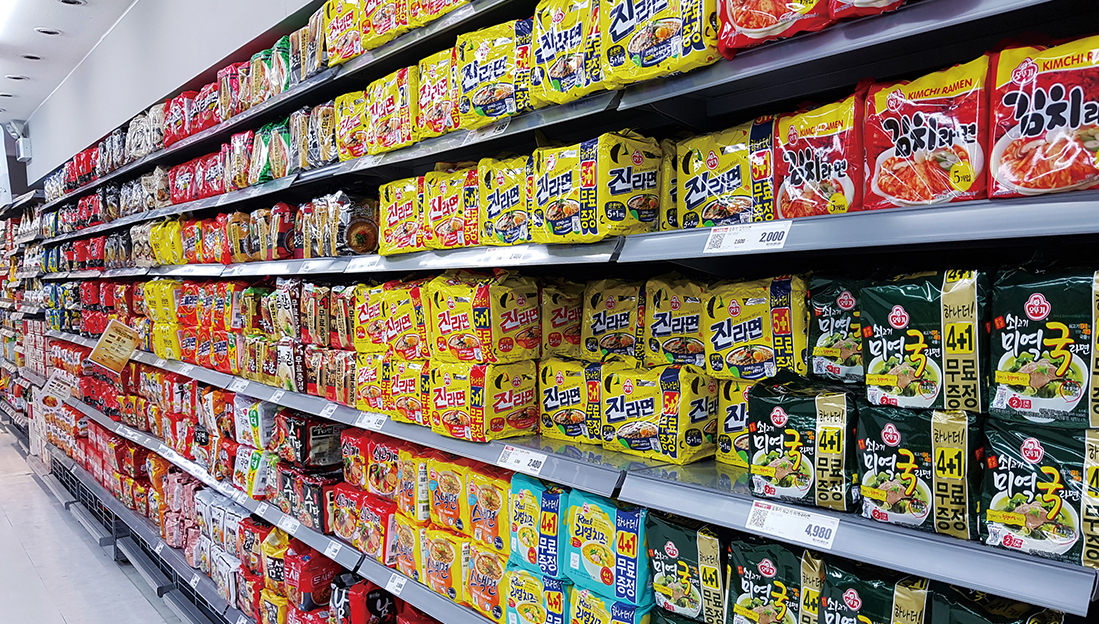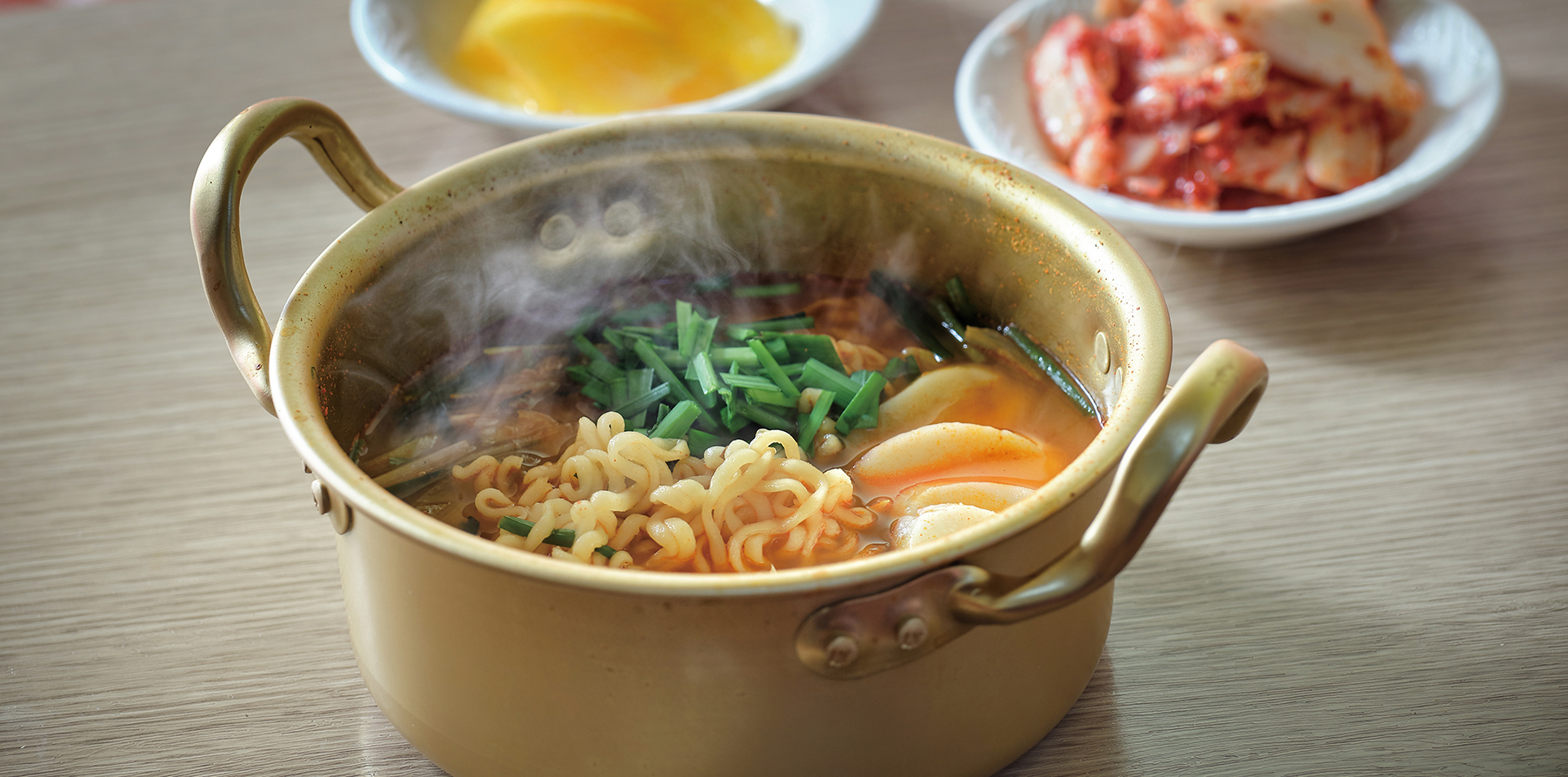Flavor
Noodling Around
Ramyeon
Ramyeon (instant noodles) is seeing unprecedented popularity in Korea and worldwide. Because Korea tops the world in per capita consumption of these noodles, it also boasts the widest variety of the ever-diversifying dish. This is a look at the varieties available in Korea, along with suggestions on preparation and flavor enhancement.
Written by
• Kim Samuel
Photographed by• Studio Kenn
A topic of unending dispute is which ingredient to put in first when cooking ramyeon. Some champion the soup powder, while others opt to submerge the noodles first depending on which part they want more infused in the soup’s flavor. For the answer, look no further than the backside of a ramyeon package. Though personal preferences vary, most guides advise putting in the noodles and powder at the same time, probably based on numerous taste trials at ramyeon companies by their recipe-making teams.
Simple Satisfaction

Koreans use chopsticks to eat ramyeon, and many like to drink the soup from the bowl afterwards. © imagetoday
When using a small pot, break the noodles in half or in pieces. For a tastier outcome, use strong stovetop heat to cook the noodles as fast as possible to ensure that the noodles stay springy and not flabby. Another tip is to pick up mouthfuls using chopsticks to blow on noodle bits at a time. If either too much or too little water is used, cooking the noodles separately from the soup (and temporarily placing the cooked noodles aside) to adjust the flavor can readjust the water level.
Flavor Enhancement

Instant jjajang noodles topped with eggs and vegetables alongside rice, pickled radish and kimchi. © shutterstock
For spicy ramyeon, cheese or eggs are wise topping options to even out extreme spiciness. Chopped scallions and onions are standard toppings, and meat allows a more filling meal.
Other toppings that complement spicy ramyeon soup well include tteok (rice cake), eomuk (fish cake) and mandu (dumplings). Over-fermented kimchi and green chili are also recommended side dishes. For those who believe noodles are not filling enough, Koreans love to submerge rice, the nation’s most beloved source of carbs, in ramyeon soup. Rather than the steamy kind, rice that is a bit cold helps prevent the starchy composition of rice from going limp inside the hot soup, which seeps into the hardened grain for a more balanced taste.
From Korea to the World
The mass production of ramyeon began with Samyang Food Co. in 1963. Soon after, the food gained the reputation of Korea’s secondary staple next to rice amid food shortages caused by the Korean War.
Ramyeon variations that emerged in the 1990s include Wang Tukeong (King Lid), Twigim Udong (Fried Noodles), Ojingeo (Octopus) Jjampong and Sarigomtangmyun (a beef bone broth). By then, the domestic ramyeon market began exceeding KRW 1 billion in value. The World Instant Noodles Association said Korea consumes the dish the most, with the average person eating 74 servings per year. Among numerous products that saturate the domestic market, Nongshim, Ottogi, Samyang and Paldo are the top four players.
Introduced in 1986, Nongshim’s Shin Ramyun has led the nation in sales for an impressive 30 consecutive years since 1991. Even the company’s share of the U.S. market jumped nearly eightfold from 2% in 2009 to 15% last year. When the Oscar-winning film “Parasite” shined the global spotlight on Nongshim’s Chapagetti and Neoguri, ramyeon started garnering even greater fame abroad as a quick meal and emergency staple to stock up on.

A wide variety of ramyeon is a common sight at supermarkets © shutterstock
Samyang’s Spicy Fire Noodles (familiar to many YouTube users as Buldakbokkeummyun, literally translated as “Fire Chicken Fried Noodles”) is another ramyeon classic. Introduced in 2012, the item had the soup dropped and its sauce exuded extreme spiciness, which led to the product commanding greater demand overseas than at home. The plethora of buldak (extremely spicy chicken) challenges on YouTube went on for years, raking up massive views and triggering influencers to stream their own mukbang (streamed eating sessions) showing them eat the noodles.
The role of ramyeon has evolved from a dish to stave off hunger in a war-ravaged country to a quick but tasty meal for busy professionals during Korea’s industrialization period, and finally a source of culinary experimentation and diversity in kitchens around the world. Just like Hallyu, ramyeon is seeing its global presence and influence growing by leaps and bounds.



















